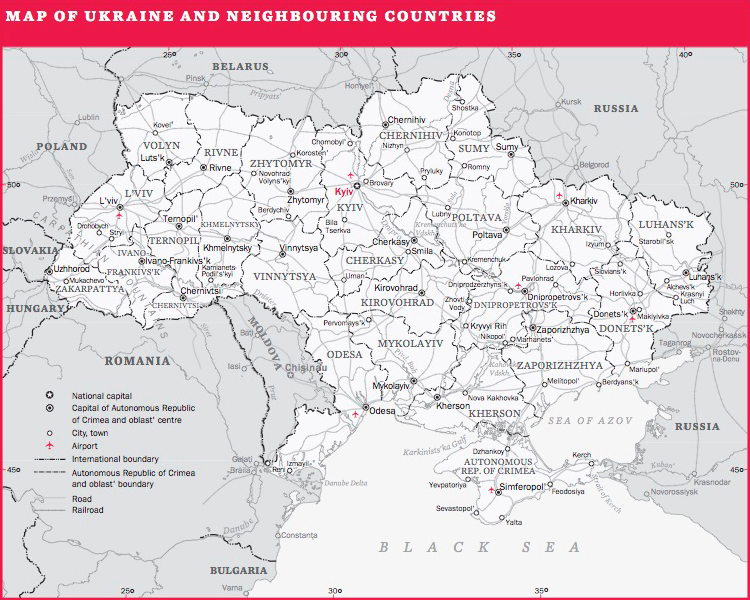3. The Ukraine conflict and its implications
Overview [PDF]
I. The Ukraine crisis: from popular protest to major conflict [PDF]
II. The application of European confidence-building measures and confidence- and security-building measures in Ukraine [PDF]
III. The impact of the crisis in Ukraine on arms transfers [PDF]
IV. Military spending in Europe in the wake of the Ukraine crisis [PDF]
Summary
Europe has invested heavily over several decades in developing a framework of rules, procedures and institutions for conflict prevention and crisis management. In 2014 the rapid downward spiral from political crisis to armed conflict in Ukraine was evidence that the arrangements remain inadequate to the challenge. The incorporation of Crimea into Russia without the consent of the Ukrainian authorities was a major challenge to the European security order.
By the end of 2014, conservative estimates suggested that at least 4364 people had been killed in the conflict and that there were approximately 500 000 internally displaced persons in Ukraine. By the beginning of 2015, there were still no prospects of a lasting settlement to the conflict.
The application of European confidence- and security-building measures
Diplomatic efforts facilitated face-to-face contact between key parties, including talks between Russia and Ukraine, and between the Ukrainian Government and representatives of armed groups active in the eastern part of the country. The priority for diplomatic efforts was to bring about a ceasefire and create the conditions for a more sustainable resolution to the conflict.
Confidence- and security-building measures (CSBMs) played a role in improving the amount and quality of information about events on the ground. However, CSBMs did not significantly reduce levels of tension in the eastern part of Ukraine, raising questions about their applicability in situations of crisis and conflict.
External reaction to the conflict included the coordinated use of sanctions by the Group of Seven (G7) industrialized countries and the European Union (EU), supported by countries such as Australia and Switzerland.
European security institutions—the EU and the North Atlantic Treaty Organization (NATO)—agreed measures to help Ukraine better provide for its security. However, in 2014 the common assistance packages stopped short of providing direct support to the Ukrainian armed forces in their mission to restore control over the eastern part of the country. Individual states did provide such support on a national basis, however, and internal deliberations over the nature of future support continued at the end of the year.

Military spending in Europe in the wake of the Ukraine crisis
The conflict in Ukraine may be the catalyst for an increase in military spending in Europe. Russia has been increasing military spending in real terms for several years and plans to continue to do so. The impact of the conflict is already apparent in Ukraine, which is increasing its military spending significantly. Several Central and North European countries bordering Russia have also announced increases in their military spending as a direct response to the crisis. However, there is less sign of such a response in most West European countries. While the initial 2015 military budgets for NATO member states were set before the respective heads of state and government met at the 2014 NATO summit in Newport, Wales, the defence investment pledge made at that meeting could translate into increases from 2016.
The impact of the crisis in Ukraine on arms transfers
The crisis in Ukraine affected arms trade relations in different ways in 2014. First and foremost, the parties to the armed conflict—the Ukrainian Government and the separatist rebels in eastern Ukraine—fought a large-scale conventional war with large numbers of weapons, including heavy weapons. Most of the weapons used by both sides were in the Ukrainian inventory before the crisis started.
Ukraine asked Western countries to supply weapons. However, European governments were sceptical about supplying arms, as was the United States, despite heavy pressure from the US Congress to assist Ukraine. Russia on the other hand did supply weapons to the rebel forces.
The crisis also affected Russian–Ukrainian arms trade relations, which after some hesitation on the Ukrainian side were broken off by the end of 2014—presenting serious problems for Russia, which is dependent on Ukraine for some key weapon components. Russia’s developing arms trade relations with Western states were also suspended. Both sets of broken relations are likely to affect the already stretched Russian economy and plans for military modernization.